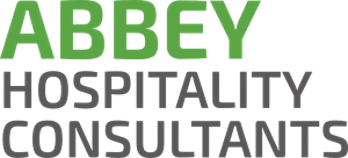
Leadership: Busting the Hierarchy
Forward-leaning companies seeking to move beyond average recognize the incompatibility of top-down hierarchical structures with the agility required in today’s marketspace. The quantity of information to be processed, education, and different values and beliefs of a younger work force are just some of the paradigms challenging the continued efficacy of this structure.
Our organizational dynamics, to include a prevalence of higher education, delegated decision-making, and active use of teams, each work against the basic tenets of the hierarchical organization. And as people seek empowerment and to actively participate in the decision-making process, these structures become even more problematic.
In the hierarchical organization, the structure itself provides the basis for formal authority. The decision-making process here is almost always unilateral.
Under a legacy hierarchical structure, senior management issue directives, middle management make tactical decisions and assign tasks, and supervisors ensure front-line workers follow directions. Few companies would admit to this as their construct. Many believe they operate an agile learning organization with an innovative, creative, and empowered workforce. But this is another concept hijacked by reality.
These legacy constructs no longer meet our needs. They’re based upon a classical management structure that assumes a servant manager-worker relation, but where the worker serves the manager. The structure limits empowerment and engagement. And it remains overly dependent upon supervision and the use of metrics tied to individual employee performance.
Midsize and larger companies that don’t cling to a rigid top-down structure are the exception. The realm needed to move towards excellence and more resilience has little in common with these legacy structures.
To implement this movement, senior management must transcend beyond merely issuing directives. Senior leaders must establish a clear purpose for the company, with documented core values and beliefs that drive behavior and challenge the organization to achieve breakthrough goals. Middle management must move beyond minor decisions and task assignment. They need to assume the role of removing barriers and enabling the workforce. And front-line workers no longer focus on merely doing what they’re told. Instead, they help identify problems and generate ideas for improvement.
Much of this current issue is about to be obviated. It will soon be overcome by beliefs of a changing workforce and new realities of a post-pandemic world. Even prior to the pandemic, this demographic shift began changing our definition of work. What the word meant to someone thirty years ago bears little resemblance to where we’re headed. While many companies previously resisted remote work, our recent events have shattered those paradigms. Companies that don’t figure out how to optimize remote work will be left behind by our new world.
While our new work environment will be different, the people moving into our workforce are also different. Much has been written about these “digital natives” and their different values and beliefs. They view the work-life balance thing through a different lens. They have different expectations for feedback and a larger concern for the interdependency of their work to the
environment. They’re also good people, just like those before them, and those who will come after them.
Millennials now make up the largest demographic of working-age employees. The different experiences they grew up with provided them different beliefs and ways of thinking. And just behind Millennials are Gen Z, the largest generation in the United States with about 90 million people.
I sometimes hear companies refer to our current workforce changes as a problem. The best companies don’t have a Millennial problem and aren’t seeking a solution. They don’t need a solution because they don’t view a younger workforce as a problem. They recognize this isn’t some new issue to be solved.
The continual re-introduction of younger workers with different values and beliefs has been the recurring state of business since the first industrial revolution. In 1899, Elbert Hubbard penned A Message to Garcia, and wrote about the frustration of business owners over young clerk’s “half-hearted work” ethic. The generation Hubbard complained about would be our great-great-grandparents now.
Some things, it seems, never change.
The best companies don’t have a Millennial problem because they understand these Millennials, and behind them Gen Z, are people. And leaders, first and foremost, are in the business of people. We embrace what each person brings to the situation and work with them so that together we can move closer to excellence.
Happy Sailing! 😊








